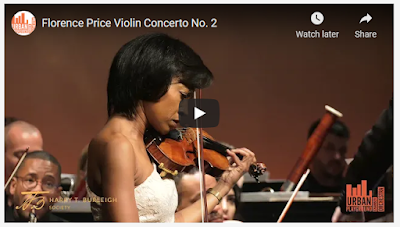American composer Florence Price wrote over 300 pieces of music, including symphonies, concertos, sonatas and songs. Here are some of her best.
Florence Price (1887-1953) was a prolific composer of orchestral music, chamber pieces and songs.
She wrote four symphonies and other large-scale orchestral pieces; concertos for the piano and the violin; two string quartets, and other chamber and instrumental pieces, as well as large-scale choral works, songs and numerous solo organ and piano pieces – including her 1931 Piano Sonata that won the Rodman Wanamaker Contest in Musical Composition.
She made history when the Chicago Symphony Orchestra performed her Symphony in E minor, making her the first female Black composer to have a symphony performed by a major US orchestra.
Although Price wrote over 300 pieces of music, her work was largely forgotten after she died. “My dear Dr Koussevitzky,” she had written to the Russian conductor in her lifetime, “I have two handicaps – I am a woman; and I have some Negro blood in my veins.”
In spite of the struggle to be heard in her own lifetime and after, much of Price’s music is now being rediscovered and getting the recognition it has always deserved. Here’s where to start.
Symphony No. 1
On 15 June 1933, Chicago Symphony Orchestra performed a new piece by a then-unknown composer. The composer in question was Florence Price, and the performance made history for being the first by a major US orchestra of a work by a Black female composer.
The Chicago Daily News described the piece as “a faultless work... that speaks its own message with restraint and yet with passion... worthy of a place in the regular symphonic repertoire.”
The symphony, in E minor, combines the Western symphonic tradition – the influences of composers like Dvořák and Tchaikovsky are apparent – with West-African musical styles. Specifically the ‘Juba Dance’, a pre-cursor to ragtime, which the third movement of the work is built around and named after.
Piano Sonata
Price’s Piano Sonata in E minor won her first prize in the 1932 Rodman Wanamaker Contest in Musical Composition.
The three-movement piece is characterised by memorable, syncopated melodies and ravishing dramatic flourishes that arrive amidst reflective, impressionistic moments.
Violin Concerto No. 2
Florence Price dedicated her second violin concerto to violinist Minnie Cedargreen Jemberg, who first performed it in 1964 at the opening of the Florence B. Price School in Chicago, which operated until 2011.
Like the symphonies, Price calls both on the Western classical tradition, and West-African and African American spiritual and dance traditions for this virtuosic concerto, which is written in a single 14-minute movement.
Concerto in One Movement
Florence Price also wrote a one-movement concerto for the piano (although it has three distinct sections) and she premiered the piece herself, in Chicago in 1934.
Little was heard of it after that. The score was picked up again, revived by composer Trevor Weston, and recorded by pianist Karen Walwyn and the New Black Music Repertory Ensemble in 2012.
The Oak
The Oak, or Songs of the Oak, is an orchestral tone poem – a classical work that paints a picture through music – by Price from 1943.
The music is brooding and uneasy, with flourishes of rich, colourful orchestral scoring.
Mississippi River Suite
Another orchestral tone poem, Price’s Mississippi River Suite depicts just that – in the music you can hear the majesty of a boat travelling down the US’s second largest river, with the sights and smells of its banks captured in the tunes along the way.
It was composed in 1943 and dedicated to Price’s mentor, the composer and songwriter Arthur Olaf Anderson.











No comments:
Post a Comment